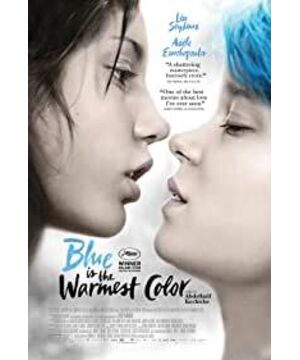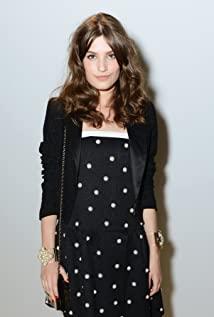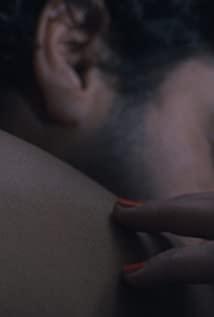At that time, "Milk and Mullet" lost to "Lust, Caution", and "Black Venus" lost to "Somewhere"; Ke Xixu returned in Venice with two consecutive works; this time he moved to Cannes and finally achieved positive results. "Adele's Life" not only won the Palme d'Or, but also won plaudits. In the new work, there are not only the delicate depiction of emotion and food in "Milk and Mullet", but also the bold display of the body in "Black Venus", and it also continues the unremitting questioning of "fairness" by Cauchy.
He changed the name of the heroine of the original book - a cartoon by French author Julie Marlowe - "Blue is a Warm Color" to Adèle, precisely because Adèle means "fair" in Arabic. Despite being dubbed the "lace-edged film", and the 15-minute gay sex scene in the film is terrifyingly beautiful due to the delicate lighting and composition of classical paintings, "gay" is not The only subject of Adele's Life. It is clear that Adele and Emma's relationship is a copy of the classic gender structure in patriarchal culture - the short-haired artist Emma is philosophical, more successful, and more powerful; the long-haired kindergarten teacher Adele is younger and lacks. Experience and knowledge, love of novels, love of food, good at cooking... Emma is busy with her career, which makes Adele feel lost and lonely, so she has an affair with a male colleague, and Emma finds out and drives him out. Adele has never been able to forget her love, hoping to find the lost love again, but Emma has already made another "new love" Liz—perhaps not a new love, because it was Emma who often stayed at Liz's house in the name of creation. Makes Adele feel lonely and anxious. In other words, before Adele's physical derailment, Emma's spirit was derailed.
Ke Xixu alternately uses telephoto close-ups and handheld photography, and pays attention to the delicate scene arrangement and detailed description, showing the inner world and external situation of the two people in the love relationship in a three-dimensional and rich, watertight way, wrapping the audience densely. It is impossible not to follow Adele's emotional fluctuations. The most touching thing is that although the film seems to present the two heroines objectively and equally, it can still be felt that the director recognizes Adele more, even though Emma occupies a high "moral" position. In fact, this unfruitful love tragedy is not due to betrayal, but some kind of "destiny". Emma from the elite (played by Leia, the granddaughter of the founder of EMI) and Adele from the petty bourgeoisie (the unnamed little actor Adele from the audition) are destined to be unable to reach the same destination. They have completely different life plans and social ideals. Although they both accept same sex. Adele went to Emma's house to eat the freshest oysters, and her parents were graceful and tolerant; Emma went to Adele's house to eat homemade pasta, and her parents were rude. Unlike the original comics, Cauchy cut out the episode where Adele's parents were furious when they found out their daughter was gay. For Cauchy, it is not sexual orientation but class differences that are the most insurmountable chasm in French society today.
At the end, Adele finally understands that her body may only be the inspiration for Emma's artistic creation, a way for Emma to experience the world, and finally she can only be exposed to the public as an anonymous body in Emma's works. Cut off the desire to regain the old love. The gesture of turning and leaving is both distressing and gratifying. Ke Xixu from Tunisia has never forgotten his roots, and he still stands on the edge and the weak side.
But somewhat ironically, the film is always interspersed with a large number of classics of French literature, philosophy, and art, which to a certain extent also shows how deeply the culture of the suzerain is embedded in his memory.
View more about Blue Is the Warmest Colour reviews











